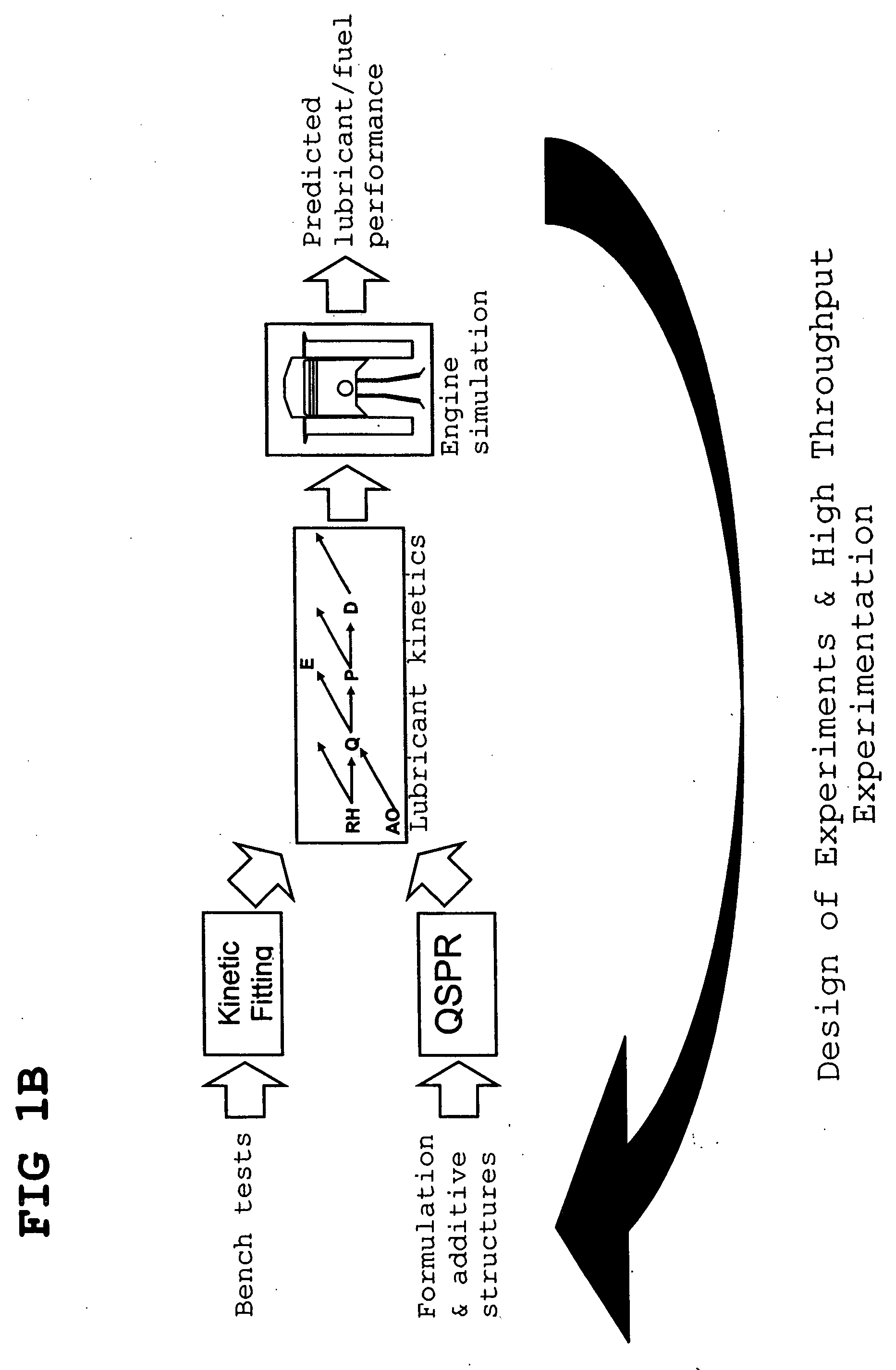Predictive technologies for lubricant development
a technology of lubricant and development technology, applied in the direction of chemical methods analysis, material testing goods, instruments, etc., can solve the problems of difficult to ascertain the kind of lubricant needed to achieve satisfactory performance, the compatibility and durability of lubricant materials are not easy to be sure, and the development of new engines is an expensive and time-consuming undertaking. , to achieve the effect of reducing the time in bringing a product to market, affecting the performance of the engine or its stability
- Summary
- Abstract
- Description
- Claims
- Application Information
AI Technical Summary
Benefits of technology
Problems solved by technology
Method used
Image
Examples
Embodiment Construction
[0013] The invention, in one aspect, relates to a method of transforming a product development process to reduce time in bringing a product to market, the method comprising the steps of:
[0014] modeling in Silico a plurality of component molecular models;
[0015] deriving in Silico molecular characteristics (descriptors) for each of said plurality of compiled molecular models;
[0016] formulating a plurality of compositions according to compositional characteristics;
[0017] bench testing the compositions; and
[0018] correlating the compositions to actual engine performance.
[0019] As used herein the phrase “in Silico” or “in Silico modeling”, and variants thereof, refers to computational work, including, but not limited to, computational work performed with a computer or computer system.
[0020] Use of a model for engine performance prediction of a fuel or lubricant additive for this aspect of the present invention is also contemplated. A computer program, comprising a set of instructi...
PUM
 Login to View More
Login to View More Abstract
Description
Claims
Application Information
 Login to View More
Login to View More - R&D
- Intellectual Property
- Life Sciences
- Materials
- Tech Scout
- Unparalleled Data Quality
- Higher Quality Content
- 60% Fewer Hallucinations
Browse by: Latest US Patents, China's latest patents, Technical Efficacy Thesaurus, Application Domain, Technology Topic, Popular Technical Reports.
© 2025 PatSnap. All rights reserved.Legal|Privacy policy|Modern Slavery Act Transparency Statement|Sitemap|About US| Contact US: help@patsnap.com



